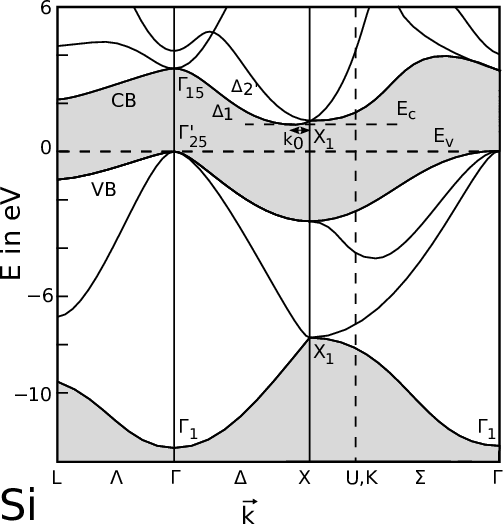
Directions | Coordinate | Remark |
Γ | (0,0,0) | Center of the Brillouin zone ( |
X | (0,0,1) | Middle of square faces |
L | ( | Middle of hexagonal faces |
K | (0,- | Middle of edge shared by two hexagons |
U | ( | Middle of edge shared by a hexagons and a square |
W | (0,- | Middle of edge shared by two hexagons and a square |
Δ |
| Directed from Γ to |
Λ |
| Directed from Γ to |
| Directed from Γ to |
|
The first Brillouin zone is defined as the primitive cell in the reciprocal lattice.
In silicon, the first Brillouin zone has a shape of a truncated octahedron
(c.f. Figure 3.2), and is characterized by eight hexagonal faces and six
square faces. The conduction band (CB) edge is located near the zone
boundary
The general band structure of unstrained silicon can be sketched as in
Figure 3.3. The principal conduction band CB minima are located along the [100],
[010], and [001] directions at a distance of about 85% from the Γ-point to the
3.2.2 Strained Silicon
The application of stress modifies the various symmetry properties, causes a
change in the band structure, and thus modifies the effective mass which leads to
the mobility enhancement [142]. Th values of
 ,-
,- ,
, )
)  ,
, )
)  ,-
,- ,1)
,1)  ,1)
,1)